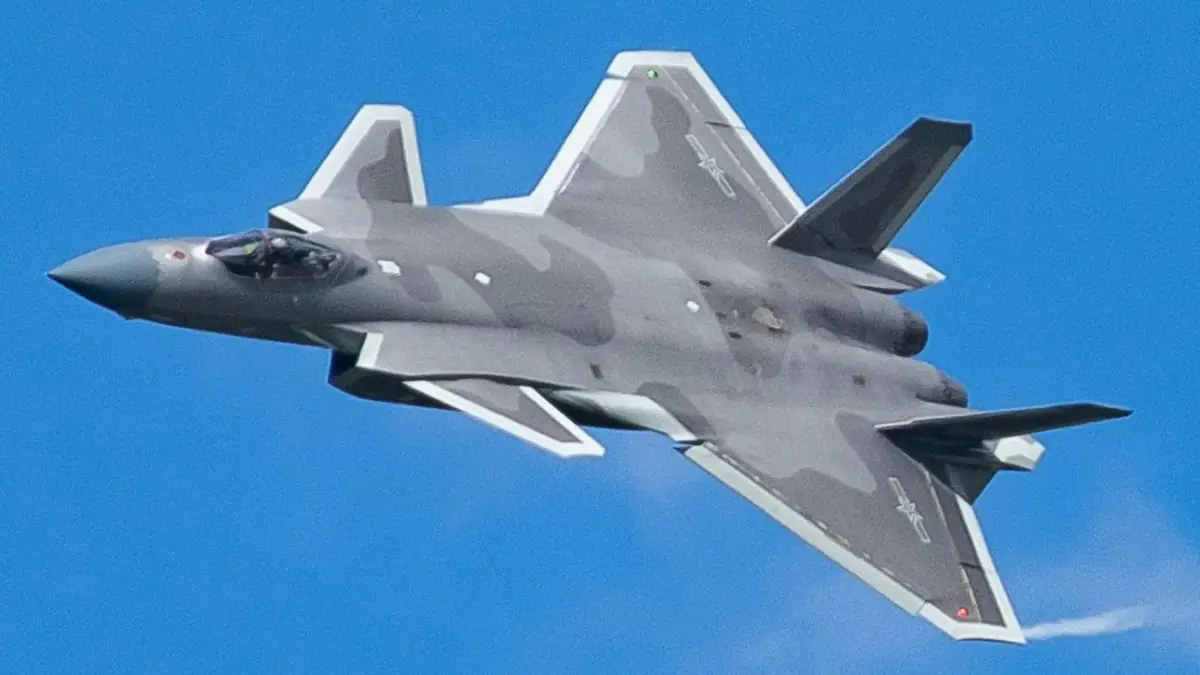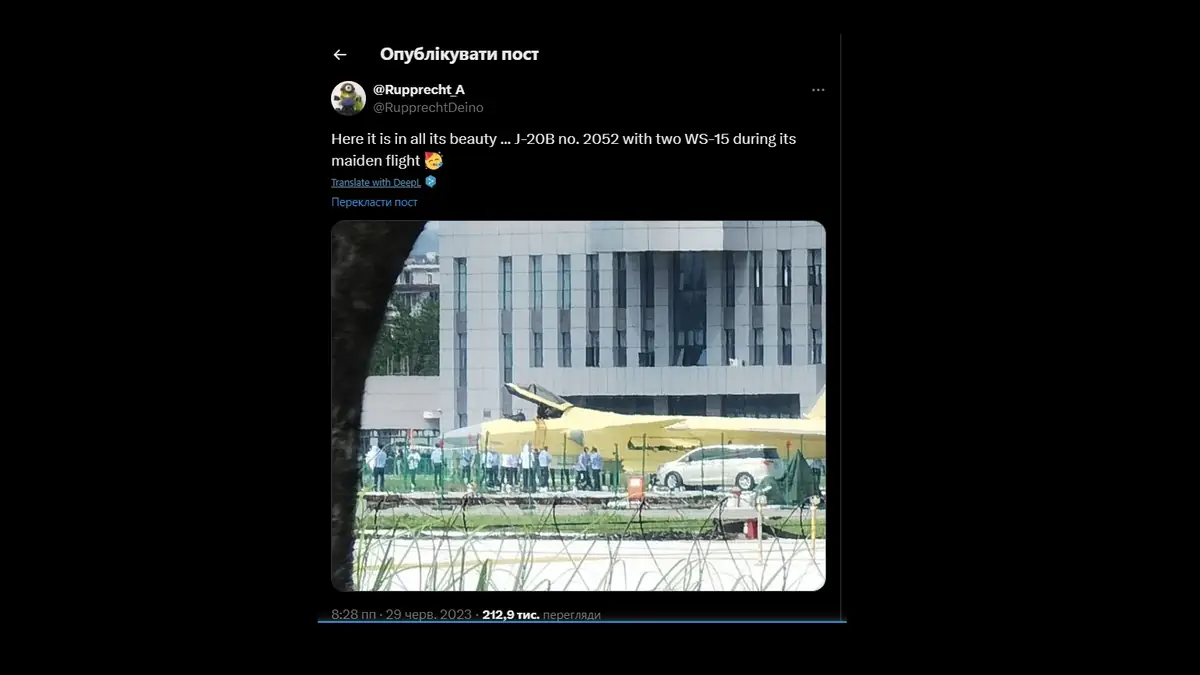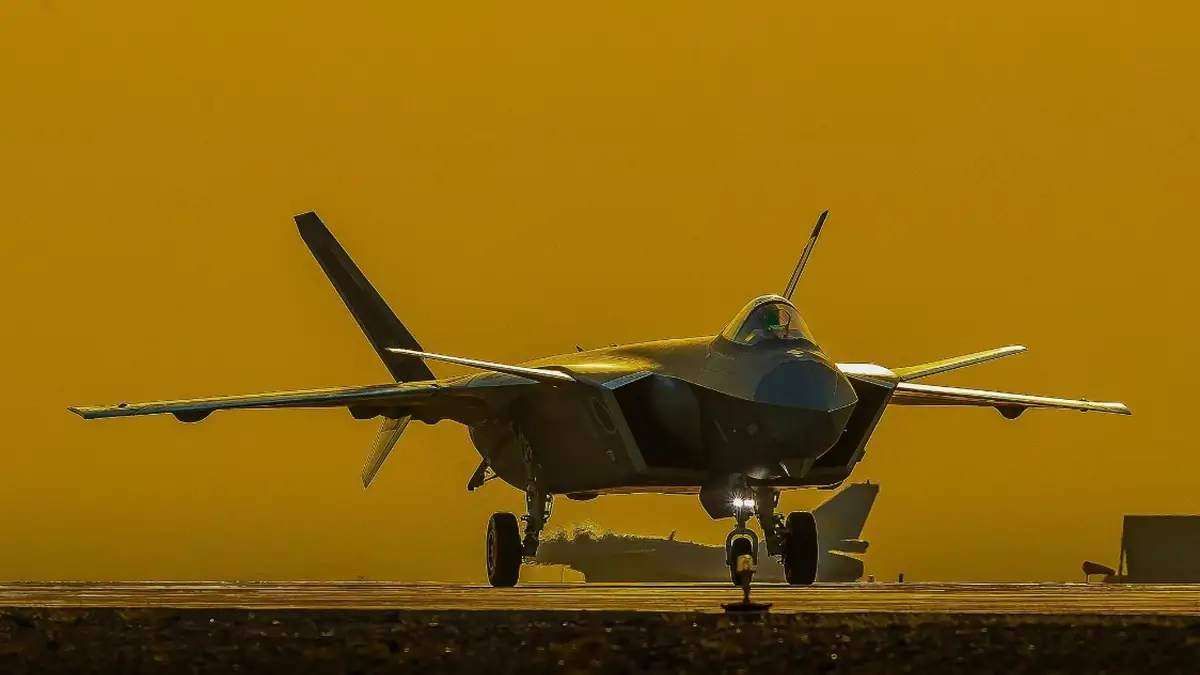The prototype of the Chinese stealth fighter J-20A was captured in the first clear image with the domestically developed WS-15 engine, according to leading Chinese military aviation researcher Andreas Rupprecht in a post on X. Rupprecht also shared a close-up image of the serrated exhaust nozzles of the J-20A (serial number 2052), which clearly distinguish the presence of the WS-15 engine.
The J-20A, with its distinctive factory yellow primer paint, is performing flights from an unknown airfield, which may be a testing site for CAC (Chengdu Aircraft Corporation). The J-20A features a slightly different nose section, cockpit canopy, and dorsal fin, the latter of which is typically used to house additional fuel or avionics – or both.

The J-20 initially flew with the Russian Saturn AL-31 turbofan engine, which was later replaced by the domestic WS-10C in 2019. The WS-15 is expected to provide greater thrust of 18,143 kg and enable “supercruise,” allowing the aircraft to maintain supersonic speeds without engaging afterburners.
In addition to improving its kinematic performance – since analysts initially noted that the J-20 was not capable of executing sharp maneuvers and advanced aerobatics like the F-22 – the new engine will also offer increased electrical power for advanced avionics, sensors, and next-generation radars. It is anticipated that CAC and the PLAAF (People’s Liberation Army Air Force) will adapt these features for new batches of the J-20, particularly as they move towards integrating unmanned systems for MUM-T (manned-unmanned teaming).
Reports of J-20 flights with the WS-15 engine first emerged in March 2022. The South China Morning Post cited CCTV materials at that time, stating that the WS-15 had “undergone a series of tests.” It remains unclear whether China will gradually retrofit all or some of its J-20s with the WS-15 or if only future production models will feature this powerplant.

Given the rising tensions in the western Pacific, retrofitting a significant portion of the fleet would be a challenging task, and the PLAAF cannot afford such a straightforward upgrade for its premier stealth fighter. It can be confidently assumed that the J-20s equipped with WS-10C engines have substantial capabilities and perform a wide range of tasks.
In 2022, General Kenneth Wilsbach, then commander of Pacific Air Forces, stated at a Mitchell Institute for Aerospace Studies conference that American F-35s had encountered J-20s over the East China Sea and that they were “relatively impressed with the command and control associated with the J-20.”

Another J-20A (serial number 2051) was reported in December 2022 by The War Zone, suggesting that this variant is expected to be equipped with the WS-15. Subsequently, The Diplomat reported that on June 29, 2023, the J-20A with serial number 2052 made its “first” flight from the CAC (Chengdu Aircraft Corporation) base, “recently fitted with WS-15 turbofan engines.”
This followed years of extensive development, ground, and flight testing on flying testbeds. The Chinese newspaper Global Times quoted the then-editor of Beijing’s Aerospace Knowledge magazine, who mentioned that “more powerful engines with thrust vectoring and variable cycle engines are likely also in development.”

However, there were still some doubts based on these images about whether they were indeed WS-15 engines, as the photos were grainy and the exhaust nozzles were not clearly defined. Recent images suggest that the engine is in the final stage of testing on the J-20A variant it is intended for, before both enter mass production and join various PLAAF air groups.
Jet engines are a highly specialized, protected technology, and only the United States, the United Kingdom, and France have fully mastered the entire range of civil and military powerplants, making them leading aerospace nations. They represent a complex blend of electrical, electronic, mechanical, chemical, and metallurgical sciences, with hundreds of intricate parts produced using precision tools and reliable industrial processes.
Since the 1970s, China has been investing billions in aviation engine research through state scientific research institutes and academic institutions. The development of the WS-15 began in the 1990s. It is not yet clear how it compares to the Izdeliye 30 engine used in the new batch of Su-57s, the Pratt & Whitney F119 for the F-22 Raptor, or the PW F135 for the F-35. While it may not be the absolute best, it can be considered the best suited to meet the needs of the PLAAF.

Given that the J-20 has entered mass production, with CAC now capable of producing 100 aircraft per year from a base of 30 units, and the PLAAF expected to have 800 aircraft by 2030, this significantly exceeds the size of the American F-22 and F-35 fleets. For the U.S., it is now crucial to rapidly deploy the F-35 with upgraded TR-3 (Technology Refresh-3) and Block 4 aircraft to stay ahead.
With a relatively less advanced but large fleet of fifth-generation aircraft, the U.S. emphasizes stealth fighters. This ensures consistency and stability in air campaigns, limiting adjustments to a tactical level. Having a supersonic-capable jet engine further enhances this advantage.
Source: TheAviationist








